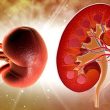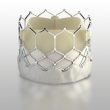This scientific article we briefly discuss the POKI technique, a new stent optimization strategy for bifurcation lesions. Coronary bifurcations represent 20 to 25% of percutaneous coronary interventions (PCI) and continue to be a real challenge at present; the different available treatment strategies are used to correct bifurcation carina after stenting seeing as incomplete strut apposition...
Resistant Obstructive Hypertrophic Cardiomyopathy: Myomectomy or Septal Ablation?
Approximately 70% of hypertrophic cardiomyopathies (HCM) are associated to a left ventricular outflow tract (LVOT) obstruction and mitral valve failure leading to dyspnea and cardiac failure in a high number of patients. Even though at present there are effective drug treatments combined with pacemaker implantation, surgery (septal myomectomy (SM) continues to be the first choice...
Long-Term Evolution of Hybrid Coronary Revascularization
Currently, myocardial revascularization surgery (MRS) and percutaneous coronary intervention (PCI) are the available strategies for multivessel coronary artery disease. However, an alternative strategy has long been developed, called hybrid coronary revascularization (HCR), where the anterior descending artery is bypassed with a graft from the mammary artery and the rest of the lesions are treated by...
Non-ST Elevation MI: How Long Do We Have for A Coronary Angiography?
This summary discusses the early invasive strategy and the risk of mortality in non-ST-elevation AMI. Over the past 2 decades, mortality and complications rates have seen a significant reduction thanks to technological and pharmaceutical development, and the increasing experience of health teams. This is especially true when we look at the use of coronary angiography...
Is it Possible to Reduce DAPT Time in Diabetic Patients?
Short-duration dual antiplatelet therapy (DAPT) after percutaneous coronary intervention (PCI) with DES is growing steadily, especially for chronic coronary syndromes. There is also some evidence regarding its use in acute coronary syndrome. However, diabetes is a well-known risk factor for both restenosis and thrombosis, since it involves more complex and longer lesions in vessels that...
The Most Important Articles of 2022 in Structural Heart Disease
Discover the most read scientific articles on interventional cardiology of 2022 in our website. We Should Treat Significant Stable CAD in Patients Undergoing TAVR Aortic stenosis is associated to significant coronary artery disease (CAD) in nearly 50% of cases. When we decide to treat aortic disease using surgery, it has been established we should also treat...
Can We Use DAPT for 3 Months in Acute Coronary Syndrome?
Current guidelines recommend 12-month dual antiplatelet therapy (DAPT) after DES stenting for acute coronary syndrome (ACS) because of elevated MACE risk. The development of more modern stents, with thin and ultrathin struts, compared against prior versions, has resulted in more effective devices in terms of stent thrombosis and restenosis. Prolonged DAPT has been associated with...
Hybrid Coronary Revascularization: A Valid Option?
In this article, we will examine the use of hybrid coronary revascularization to treat multivessel coronary artery disease. Coronary artery disease (CAD) is the most common cause of morbidity and mortality in the western world. The presence of multivessel CAD is associated to high short and midterm mortality and coronary artery bypass graft (CABG) is...
Is There Any Difference in Clinical Outcomes Between Transient and Persistent Acute Kidney Injury in ACS Patients after Invasive Treatment?
Acute kidney injury (AKI) following acute coronary syndrome (ACS) is associated with prolonged hospital stay and worse prognosis at followup. However, serum creatinine level increase can either be transient or permanent. At present, retrospective studies show transient AKI patients present similar survival rate to patients with no AKI. The prognostic implications of transient and persistent...
Real-World Results of Different Devices for TAVR
Transcatheter aortic valve replacement (TAVR) keeps growing in terms of the development of new devices, more extensive operator experience, and enhanced procedure planning. Nowadays, there are multiple device options, which depend on patient characteristics and operator experience. Two-arm studies compared these devices, analyzing the potential benefits of a certain valve over the others. This multicenter...









